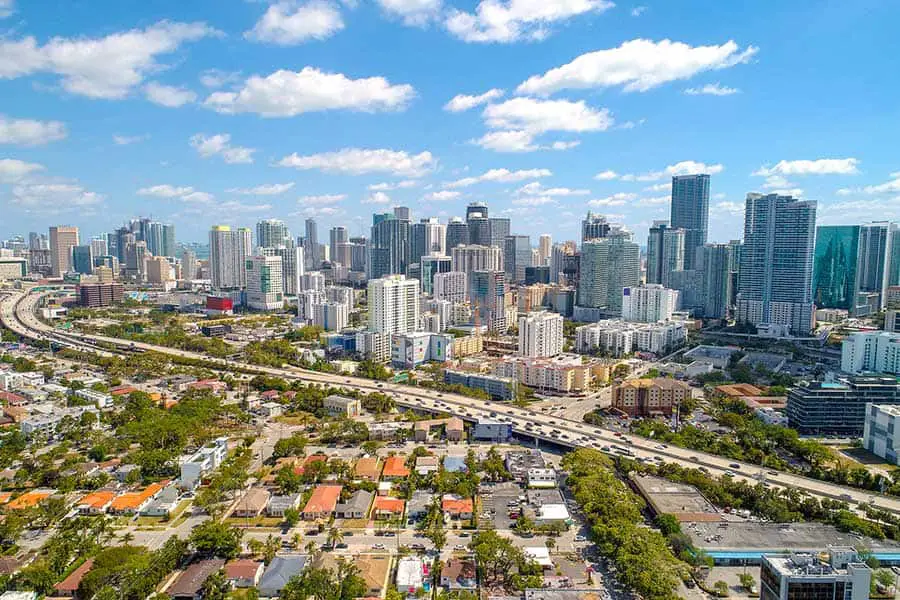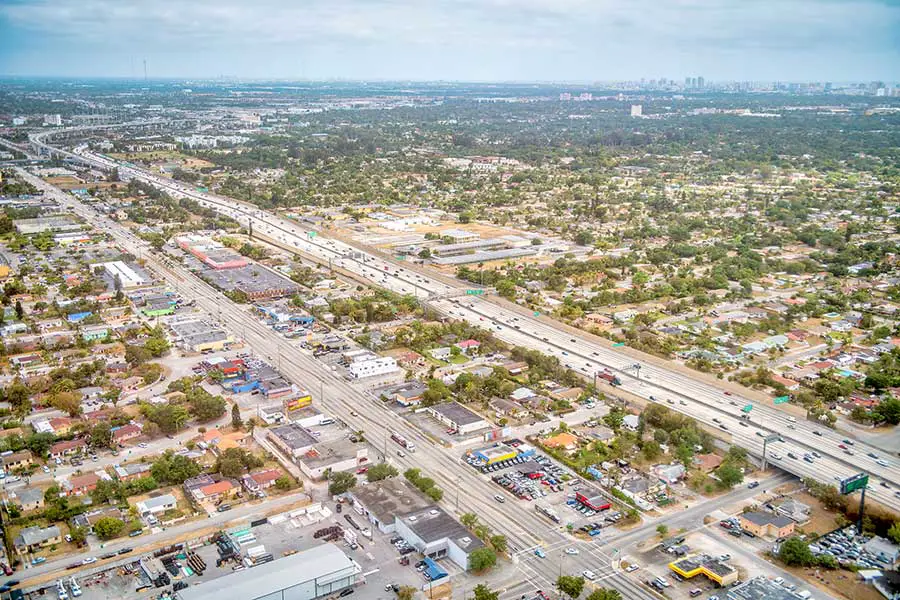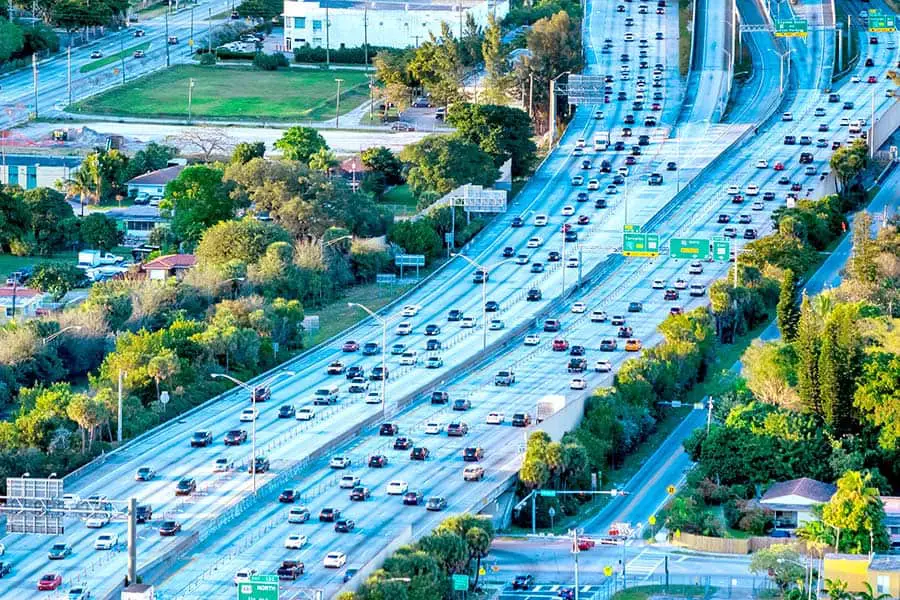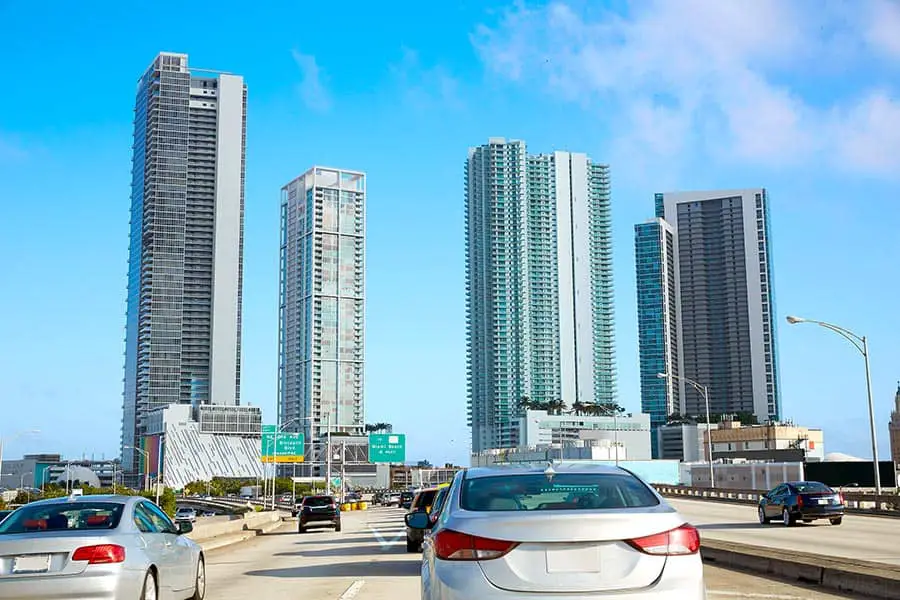
Floridians have a reputation as being bad drivers. Some big cities, especially Miami, have a reputation for being on a whole different level in terms of driving, but is Miami hard to drive in?
Driving in Miami is challenging. The roads are very congested. The heavy development of South Florida has brought more people and more cars to the area, and the ceaseless traffic has led many locals to adopt interesting driving techniques. We recommend that you avoid driving in Miami if possible.
So is there a bypass around Miami? When is the Miami rush hour? Which are the busiest roads? Can you find parking in Miami? Learn about these topics and more in the following sections.
Driving in Miami: An Adventure
Miami is a beautiful city. The towering skyscrapers, the glowing beaches, the fantastic food, and the fast-paced, fun culture – there is a lot to like about Miami! It’s so popular, in fact, that more than six million people call the area home. Unfortunately, this massive population has led to some serious issues on the roads of Miami.
The roads of Miami are laid out in a grid, divided into four quadrants: Northeast, Northwest, Southeast, and Southwest. The grid is divided between north and south on Flagler Street; the east-west divider is Miami Avenue. This grid system makes it easy to navigate once you learn how it flows and can help you get oriented quickly.
The rules of the road in Miami are, in theory, the same as the rules anywhere else. For example, drivers can turn right on red, should signal turns, must yield to pedestrians, and so on.
Unfortunately, many locals ignore or creatively interpret these rules. It is not uncommon for people to swerve across multiple lanes of traffic without warning. If you choose to drive in Miami, you should stay alert.
People in Miami sometimes operate unusual motor vehicles. You might see an ATV, a dirt bike, or a car that seems to be held together mostly with duct tape and spit. Watch out for motorcycles: bikers often split lanes, and some will weave through traffic.

In Miami, drivers will sometimes tailgate, make unexpected lane changes, and slam the brakes out of nowhere. People honk, gesture, and yell out their windows. Sometimes, people drive around honking for no discernible reason.
If you are not used to this kind of behavior, it can be very disconcerting or even frightening. The flavor of driving in Miami is closer in many ways to driving in places like Santo Domingo than it is to places like Orlando or Tampa.
Driving in Miami is challenging, but it’s not all bad. You might see an exotic car, like a Ferrari or a Lamborghini. Many people in Florida like to customize and soup up their vehicles, and Miami is no exception. You’ll see cars that have been customized in every way possible, some with more panache than others. And if you’re a motorcycle lover, you’ll probably see some neat bikes while you’re on the road.
Is There a Bypass Around Miami?
If you’re traveling to points beyond or near Miami but don’t want to drive through the city, you can take State Road 826, also known as the Palmetto Bypass Expressway. SR826 originates near Route A1A, along the coast just east of North Miami Beach, and proceeds east. It has junctions with Route 1, I-95, and US 441. SR826 then hooks south near Miami Lakes, has a junction with I-75, and continues south to the Kendall area, southeast of Miami.
The Palmetto Express Byway is heavily traveled and sees more than 250,000 cars a day.
Another bypass around Miami is Florida’s Turnpike. Florida’s Turnpike is a toll road that connects Florida City in south Florida to Wildwood, where it joins I-75. The turnpike can be busy, but it is an excellent way to avoid driving through Miami itself.
Phenomenal Florida Fun Fact: Florida’s Turnpike runs through a city called Yeehaw Junction (population: about 250). The town was previously known as Jackass Junction until the Florida legislature changed the name in 1957, when the Turnpike was being constructed.
Other Posts of Interest
- Which Side Of Florida Has Warmer Water?
- Which Beach Is Better: Clearwater Or St. Pete?
- Can You Boat The Entire Suwannee River?
- What Is The Most Visited Beach In Florida?
What Time is Rush Hour in Miami?
The morning rush in Miami begins around 7 AM and ends around 9 AM. In the afternoons, the rush is in force from about 3 PM to 7:30 PM. During these times, there is massive traffic flow as commuters and locals scramble to complete their daily drives.

On the weekends, there is not as much of a “rush hour,” but events and seasons can impact traffic. For example, during the Spring Break season, traffic will be bad. In addition, sports events, concerts, and other large gatherings will also snarl up traffic.
During rush hour, traffic in Miami is bumper-to-bumper, more or less, no matter where you go. If you plan to drive in Miami, it is wise to avoid planning to travel during these times. If you are passing through Miami, try and time your drive to avoid hitting the rush. Otherwise, pack refreshments and download some podcasts because you will be sitting in traffic.
What Routes are the Busiest in Miami?
- Midtown Miami (Design District), between NE Second Avenue and 36th street. Shoppers, commuters, and tourists converge on this area, which has a confusing series of tangled intersections mixed with railroad crossings. This is a frustrating stretch.
- North Kendall Drive. Homeowners here have actually requested that the city stop issuing building permits for homes and businesses until the traffic is addressed.
- I-95. All of I-95 in Miami is hyper-congested. Frequent on/off ramps in the metro area keep traffic clotted on the highway.
- A1A. This coastal route is also super-congested with tourists, pedestrians, and cyclists. Expect to move at anywhere from 1-5 miles per hour along most of A1A.
Why is Miami Traffic so Bad?
Miami is the most congested city in Florida and the 6th most congested in the United States. The core reason for the traffic is that Miami has more people driving on its roads than the roads were designed for. Many commuters and local residents prefer not to use public transit and choose to drive even if they could ride the rails or take a bus.
On top of all that, many tourists in Miami either arrive via their own cars or rent cars when they arrive, which puts more drivers on the road, many of whom are unfamiliar with the area and consequently drive erratically. The chronic congestion can cause drivers to be frustrated, which leads to more erratic driving and even road rage, which then causes more backups in a vicious feedback loop.
Is Parking Bad in Miami?
Parking in Miami can be expensive and hard to find. Street parking, especially in the more popular areas, is scarce and often metered at $2-4 an hour.
Your best option is to find a parking garage. If staying at a hotel or resort, inquire about their parking, and consider leaving your car at the hotel and taking transit or a cab. You can find parking in commercially operated parking garages, but parking is up to $8 an hour or even more during peak times.
Many people use services like SpotHero and ParkMe to find and reserve parking.

Miami Driving Tips
- Road rage is a serious problem in South Florida. Drivers have been known to exchange gunfire, ram one another, and otherwise act crazy. Do not engage with road rage: do not cut people off, do not tailgate, and do not “punish” other drivers. If someone is being aggressive, stay calm, drive predictably, and look for a way to exit the situation. You can contact the Highway Patrol or local police by calling 911 or *347 (*FHP).
- Stay alert. Stay off your phone.
- Plan ahead. Look at a map before you drive to familiarize yourself with the area. Do not blindly rely on your GPS.
- Avoid rush hour at all costs.
- Use defensive driving techniques.
- Many Miami drivers speak Spanish and have limited English. If you are in a fender-bender and need to communicate, you may need to call a translator or use some kind of translation app.
- Consider using transit or hiring a taxi or rideshare. We’re not trying to be negative, but driving in Miami can be unpleasant, and it might be easier to hire the task out to someone else.
Driving in Miami: Is It Worth It?
If you’re visiting Miami, you should seriously consider whether you want to have a car with you or whether it’s better to plan to use transit or rideshares. You may even be able to get around on foot, depending on where you stay. If you are traveling through Miami, avoid rush hour and consider alternative routes that keep you out of the urban core. Miami’s beaches, people, food, culture, and history make it a unique and fun place to go, but tackling the roads in this famous Floridian city can definitely be a challenge.





